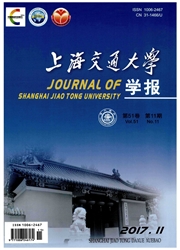

 中文摘要:
中文摘要:
为了避免基于反向传播(BP)神经网络的主轴热误差模型精度低、通用性不强和收敛性较差等缺点,利用模糊聚类理论与相关分析法对温度变量进行优化,并且选取热敏感点以挖掘温度变量与热误差间的相关性,降低温度变量间的耦合性.利用粒子群优化算法(PSO)将预测输出与期望输出间误差平方和的倒数作为个体适应度函数,将个体头部分与身体部分的表现码分别映射为网络的隐含层节点数、权值和阈值,实现了对BP网络的拓扑结构的有效优化,通过跟踪个体极值和全局极值实现了粒子群个体速度与位置的更新.分别建立了基于BP和PSO-BP网络的热误差模型,以精密坐标镗床主轴为研究对象,采用五点法对高速主轴热误差进行测量.结果表明,PSO-BP模型可实现不同工况下主轴空间位姿状态的高精度预测,验证了测量及建模方法的有效性.
 英文摘要:
英文摘要:
To overcome the lower accuracy,poor convergence and worse generality of the thermal error modeling method based on BP neural network,the fuzzy cluster theory was used to group temperature variables and the correlation analysis was conducted to select thermal senstive points to mine the correlation between temperature variables and thermal errors and to reduce the coupling among temperature variables.Besides,the reciprocal of the square sum of the residual errors was regarded as the individual fitness function in the PSO algorithm.Moreover,the performance code of the head of the individual was regarded as the number of the nodes in the hidden layer and the body of the individual was mapped to the weights and thresholds of the BP network.The extreme value and global extreme value of the individual were tracked to update the speed and position of the individuals.Then,the five-point method was utilized to measure the spindle thermal errors of a jig-boring.After that,the elongation and thermal tilt angle models were established based on the BP and PSO-BP models.The results show that the thermal error model based on PSO-BP model can predict thermal errors of the machine tool spindle under different cutting conditions andthe results validate the effectiveness of the measuring and modeling methods.
 同期刊论文项目
同期刊论文项目
 同项目期刊论文
同项目期刊论文
 期刊信息
期刊信息
